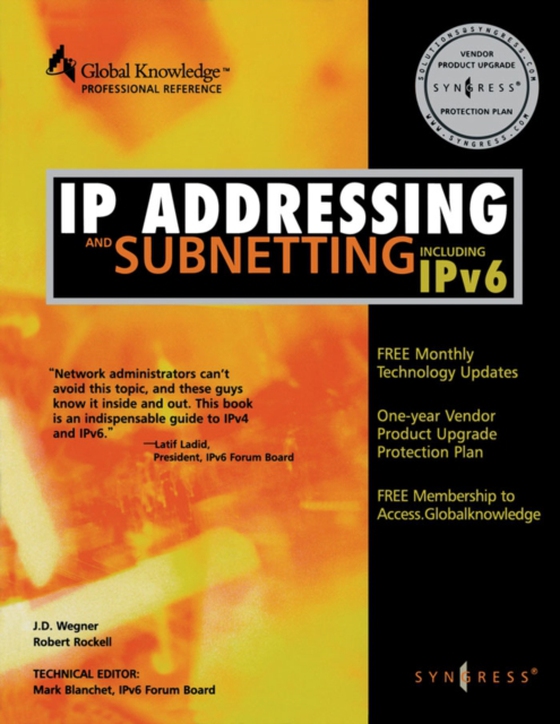
IP Addressing and Subnetting INC IPV6 e-bog
378,70 DKK
(ekskl. moms 302,96 DKK)
Internetworking Protocol (IP) addresses are the unique numeric identifiers required of every device connected to the Internet. They allow for the precise routing of data across very complex worldwide internetworks. The rules for their format and use are governed by the Internet Engineering Task Force (IETF) of the The Internet SOCiety (ISOC). In response to the exponential increase in demand fo...
E-bog
378,70 DKK
Forlag
Syngress
Udgivet
28 januar 2000
Længde
529 sider
Genrer
Internet: general works
Sprog
English
Format
pdf
Beskyttelse
LCP
ISBN
9780080535227
Internetworking Protocol (IP) addresses are the unique numeric identifiers required of every device connected to the Internet. They allow for the precise routing of data across very complex worldwide internetworks. The rules for their format and use are governed by the Internet Engineering Task Force (IETF) of the The Internet SOCiety (ISOC). In response to the exponential increase in demand for new IP addresses, the IETF has finalized its revision on IP addressing as IP Version 6, also know as IPng (ng = Next Generation). Key hardware vendors such as Cisco and major Internet Service Providers such as America Online have already announced plans to migrate to IP Version 6.IP address allocation within an organization requires a lot of long-term planning. This timely publication addresses the administrator and engineer's need to know how IP 6 impacts their enterprise networks. Easy-to-read, light technical approach to cellular technology Ideal for companies planning a phased migration from IP 4 to IP 6 Timely publication: The IETF standard was finalized in early 1999 and will begin to be implemented in late 1999/2000. The current IP Version 4 address set will be exhausted by 2003 The book focuses on planning and configuring networks and devices for IP 6. Specifically, it will cover how to: Increase the IP address size from 32 bits to 128 bits; Support more levels of addressing hierarchy; Support an increased number of addressable nodes; Support simpler auto-configuration of addresses; Improve the scalability of multicast routing by adding a "e;scope"e; field to multicast addresses; Use a new "e;anycast address"e; to send a packet to any one of a group of nodes
 Dansk
Dansk

